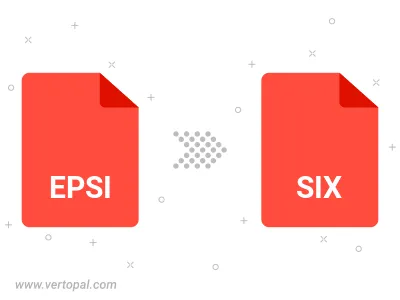Convert EPSI to SIX
Convert EPSI images to SIX format, edit and optimize images online and free.

EPSI, standing for Encapsulated PostScript Interchange, is a file extension used primarily in the printing and graphic design industries. It stores PostScript data along with a low-resolution preview in bitmap format, facilitating the visualization of graphic content in layout applications without needing to interpret the complex PostScript code. Introduced in the 1980s by Adobe Systems, EPSI files serve as a bridge between different software applications, ensuring consistent and high-quality output in various publishing workflows. Their efficiency and adaptability have made them a standard for exchange of graphic data in professional environments.
The SIX file extension, short for "six pixels", is a bitmap graphics format developed by Digital Equipment Corporation (DEC) for their terminals and printers. Introduced initially to send bitmap graphics to DEC dot matrix printers like the LA50, SIX later facilitated the transfer of soft fonts to terminals such as the VT220. This format encodes images using a series of six-pixel-high patterns, making it efficient for transmitting graphics over 7-bit serial links. Rediscovered around 2010, SIX remains in use with modern terminal emulators for tasks like video playback.
Drag & drop any EPSI file from your device or click the Choose File button to proceed.
Check the file preview quickly and use EPSI to SIX tools if you need to change the conversion settings.
After the convert is complete, click on the Download button to get your SIX image.

To change EPSI format to SIX, upload your EPSI file to proceed to the preview page. Use any available tools if you want to edit and manipulate your EPSI file. Click on the convert button and wait for the convert to complete. Download the converted SIX file afterward.
Follow steps below if you have installed Vertopal CLI on your macOS system.
cd to EPSI file location or include path to your input file.Follow steps below if you have installed Vertopal CLI on your Windows system.
cd to EPSI file location or include path to your input file.Follow steps below if you have installed Vertopal CLI on your Linux system.
cd to EPSI file location or include path to your input file.